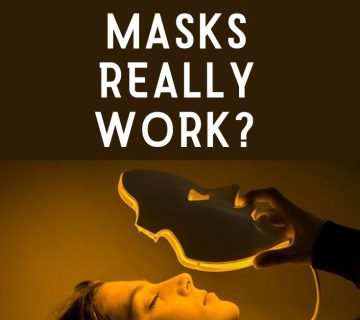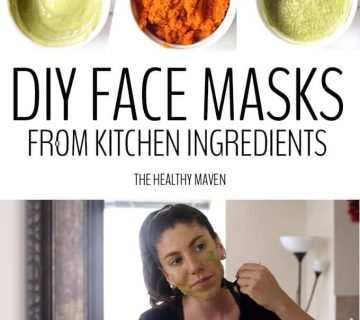Do Light Therapy Masks Work? The Truth Behind the Glow
Light therapy masks have taken the skincare world by storm. From TikTok influencers to dermatologists’ offices, these glowing devices promise clearer skin, fewer wrinkles, and a radiant complexion—all from the comfort of your home. But do they actually work, or are they just another overhyped beauty trend? If you’ve ever wondered whether these futuristic masks are worth your time (and money), you’re in the right place.
In this deep dive, we’ll uncover the science, explore real-world results, and answer the questions you’re asking—like how effective light therapy masks are for acne, anti-aging, and overall skin health. We’ll also look at the latest research, tackle myths, and give you practical tips to get the most out of these devices. Plus, we’ve got some fresh insights you won’t find in other articles, including how your lifestyle might affect results and what the future holds for this tech. Let’s get glowing!
What Are Light Therapy Masks, Anyway?
Imagine a mask that looks like it belongs in a sci-fi movie, with tiny lights shining on your face. That’s a light therapy mask! These devices use light-emitting diodes (LEDs) to send specific colors of light—like red, blue, or green—into your skin. Each color has a job: red light might boost collagen (think fewer wrinkles), blue light could zap acne-causing bacteria, and green light may help with dark spots.
Unlike the sun’s harsh rays, LED light doesn’t burn or damage your skin. It’s gentle, non-invasive, and safe for most people. You can get professional treatments at a dermatologist’s office, but at-home masks have become super popular because they’re easy to use and more affordable over time. Some masks cover your whole face, while others are handheld wands you move around. Either way, the idea is simple: sit back, let the lights do their thing, and watch your skin improve.
But here’s the big question: does the science back up the hype? Let’s break it down.
How Do Light Therapy Masks Work?
To understand if these masks deliver, we need to know how they work. It’s all about something called photobiomodulation (don’t worry, we’ll keep it simple!). When light hits your skin, it triggers changes in your cells—like flipping a switch to wake them up.
- Red Light: Penetrates deep into your skin (about 6-10 millimeters) and boosts energy in your cells. This can increase collagen and elastin—proteins that keep your skin firm and smooth. It’s like giving your skin a mini workout!
- Blue Light: Stays closer to the surface and targets bacteria that cause acne. It creates a reaction that kills those pesky germs without harsh chemicals.
- Green Light: Works on pigment cells to fade dark spots and even out your skin tone. It’s less studied but showing promise.
Think of it like sunlight helping plants grow—except this light is controlled and won’t give you a sunburn. Studies, like one from the Journal of Clinical and Aesthetic Dermatology, show that red light can increase collagen density by up to 31% after a few weeks. Blue light, meanwhile, has been shown to reduce acne lesions by 46-76% in some trials. Sounds impressive, right? But there’s more to the story.
Do Light Therapy Masks Really Work? The Evidence
Let’s get to the heart of it: do these masks live up to their claims? The answer isn’t a simple yes or no—it depends on what you’re hoping to fix. Here’s what the research and real-life experiences tell us.
For Acne: A Bright Spot of Hope
If pimples are your nemesis, blue light therapy might be your new best friend. A 2022 review found that blue LED light reduced mild-to-moderate acne by up to 76% after 4-12 weeks of use. How? It kills Propionibacterium ac-when (say that five times fast!), the bacteria behind breakouts. Pair it with red light to calm redness, and you’ve got a winning combo.
Real-World Tip: One teen I know used a blue light mask for 10 minutes daily. After a month, her forehead acne was nearly gone—no joke! But she still needed her regular cleanser to keep oil in check.
For Wrinkles and Aging: Slow but Steady
Red light is the go-to for fine lines and sagging skin. A 2023 study from Dermatology Research showed that people using red LED masks three times a week for eight weeks saw a 20% reduction in wrinkle depth. Why? It ramps up collagen production, which plumps your skin naturally.
But don’t expect overnight miracles. It’s more like planting a seed—it takes time to see the bloom. Consistency is key here.
For Dark Spots: A Work in Progress
Green light is newer on the scene, but early studies—like one from 2024 by Déesse—suggest it can break down melanin clusters (those dark patches). Results are slower, and it’s not as well-proven as red or blue light yet. If hyperpigmentation is your concern, you might need patience—or a combo with topical creams.
What the Experts Say
Dr. Elizabeth Buzney from Harvard Medical School says, “LED therapy is exciting, but the evidence isn’t fully there yet.” Small studies look promising, but big, gold-standard trials (the kind that compare it to a placebo) are still rare. So, while it can work, it’s not a cure-all.

Why Results Vary: The Hidden Factors
Here’s something you won’t find in most articles: not everyone gets the same glow-up. Why? Your results depend on a few sneaky factors.
Your Skin Type Matters
Darker skin tones absorb light differently, which might reduce how deep it penetrates. A 2021 study noted that people with lighter skin saw faster wrinkle improvements with red light. If you’ve got a deeper complexion, you might need more sessions—or a stronger device.
Lifestyle Plays a Role
Eating junk food, skimping on sleep, or skipping sunscreen can undo your mask’s hard work. Think of it like this: the mask is a teammate, not a solo superhero. One user told me her acne cleared up faster when she drank more water alongside her blue light sessions. Makes sense—hydrated skin heals better!
Device Quality Counts
Not all masks are created equal. At-home devices are weaker than pro ones (think 10-20 milliwatts vs. 100+ in a derm’s office). A 2025 report from National Geographic found some cheap masks reflect up to 90% of light away from your skin. Ouch—that’s money down the drain.
Quick Quiz: What’s holding back your results?
- A) My diet’s a mess
- B) I’m using a bargain-bin mask
- C) I forget to use it regularly
- D) All of the above
Drop your answer in the comments—we’ll chat about it!
Busting Myths About Light Therapy Masks
With so much buzz, myths are bound to pop up. Let’s clear the air.
Myth #1: They’ll Burn Your Skin
Nope! LED lights don’t get hot like lasers or UV rays. They’re safe and cool to the touch. A 2018 study confirmed no burns or serious side effects in over 100 users.
Myth #2: You’ll See Results in a Week
Sorry, instant gratification fans—this isn’t a filter. Most studies say 4-12 weeks for noticeable changes. It’s a marathon, not a sprint.
Myth #3: They Replace Your Skincare Routine
Wrong again. Masks boost your routine, not replace it. Skipping cleanser or moisturizer is like expecting a gym workout to fix a bad diet—it won’t happen.
Are Light Therapy Masks Safe?
Safety first! The good news: LED masks are generally safe for most people. The FDA has cleared many at-home devices, and side effects are rare. You might see mild redness or dryness, but it usually fades fast.
Watch Out For…
- Eye Safety: Some masks (like Neutrogena’s recalled version) raised concerns about eye damage. Always use goggles or check the manual.
- Medications: If you take stuff that makes your skin sensitive (like acne meds), talk to a doc first.
- Overuse: More isn’t better. Stick to 10-20 minutes, 3-5 times a week—overdoing it might irritate your skin.
Checklist: Before You Glow
✔️ Check for FDA clearance
✔️ Wear eye protection
❌ Don’t use if you’re on photosensitive meds without a doctor’s OK

How to Use a Light Therapy Mask Like a Pro
Ready to try one? Here’s your step-by-step guide to max out results.
Step 1: Prep Your Skin
Wash your face with a gentle cleanser and pat dry. Skip sunscreen or heavy creams—light needs to reach your skin, not bounce off.
Step 2: Pick Your Time
Most masks suggest 10-20 minutes per session. Set a timer, pop on some music, and chill. Use it 3-5 times a week for best results.
Step 3: Follow Up
After, slap on a light moisturizer or serum. Something with hyaluronic acid pairs great with red light—it locks in that plumpness.
Bonus Tip: Pair It Up
Combine blue light with a salicylic acid wash for acne, or red light with a peptide cream for wrinkles. It’s like a power duo!
Poll: How often would you use a mask?
- A) Daily
- B) A few times a week
- C) Whenever I remember
Let us know below!
The Cost Factor: Are They Worth It?
Light therapy masks aren’t cheap. At-home ones range from $50 to $500, while pro sessions can cost $100 a pop. So, are they worth it?
Budget Breakdown
| Option | Cost | Pros | Cons |
|---|---|---|---|
| Cheap Mask ($50-100) | One-time | Affordable, easy to try | Weaker light, less durable |
| Mid-Range ($200-300) | One-time | Better power, comfy fit | Still not pro-level |
| Pro Sessions | $100/session | Strongest results | Pricey, time-consuming |
My Take
If you’re consistent, a mid-range mask can pay off in 6-12 months—cheaper than endless spa visits. But if you’re on a tight budget, start small and see how it goes.
Fresh Insights: What Others Miss
Most articles stop at acne and wrinkles, but there’s more to explore. Here are three angles you won’t find everywhere.
1. Your Mood Might Glow Too
Red light doesn’t just help skin—it could lift your spirits. A 2021 review linked it to better mitochondrial function (your cells’ powerhouses), which might ease stress or fatigue. One user said her 15-minute sessions felt like a mini spa day—skin and soul benefits!
2. The Scalp Connection
Trending on X lately: people using red light masks on their scalps for hair growth. A 2024 study found it boosted hair density by 18% in 12 weeks. Not all masks fit your head, but handheld wands could double as hair helpers.
3. Customizing Your Glow
Here’s an idea: tweak your mask routine based on your cycle. Hormonal acne flares up mid-month? Hit it with blue light. Skin feeling dull pre-period? Red light can perk it up. No study’s tested this yet, but it’s a fun experiment!
Mini Experiment: Track your skin for a month with a mask. Note when it shines brightest—share your findings with us!
The Future of Light Therapy Masks
What’s next? Tech’s moving fast. A 2024 breakthrough from KAIST unveiled a flexible LED mask that hugs your face, boosting elasticity by 340% compared to stiff old models. Brands are also testing combo lights (red + blue in one go) and even AI to tailor sessions to your skin type. Imagine a mask that knows what your face needs—wild, right?




No comment